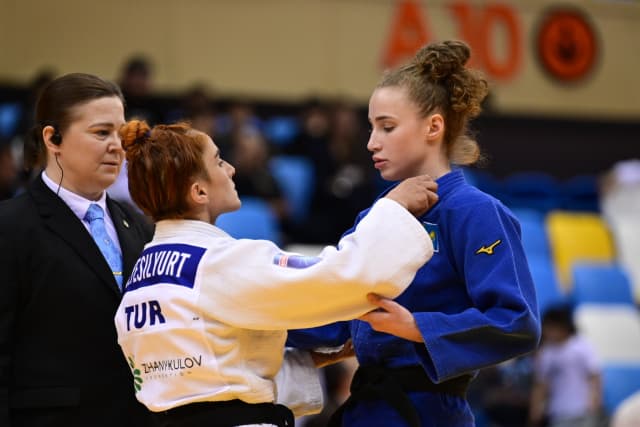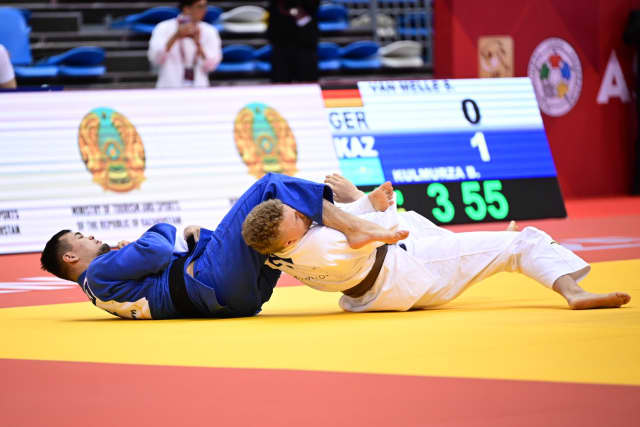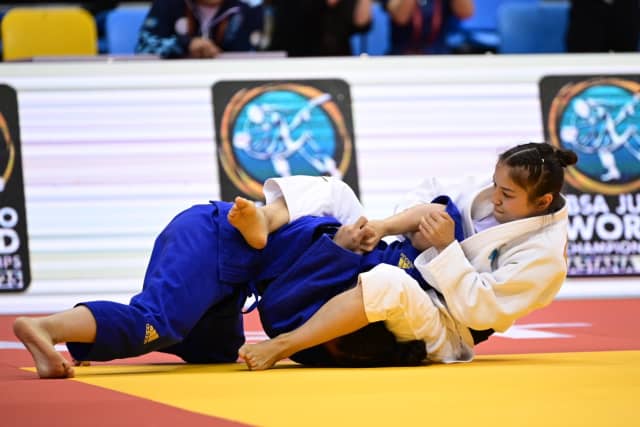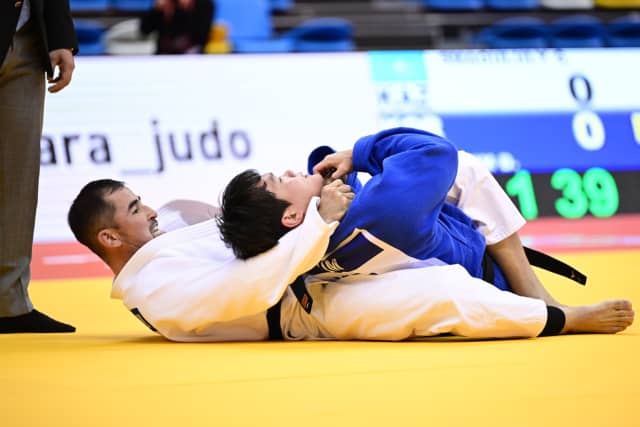Of course, the higher the level of the athlete, the more they can anticipate and feel movement transmitted through the hands and the tensions in different parts of the body, among other factors.
Once on the ground, the situation is completely changed. Full body contact and a non-neutral starting point mean that advantages are exploited very quickly and submissions can be a quick-fire affair. Both shime-waza and kansetsu-waza wins were logged from the earliest rounds of day one at the 2025 IBSA Judo World Championships Astana.
In ne-waza, judoka understand their positions, their opportunities and their opponents’ defence options, while also maintaining a connection to the tatami. With no possibility to fall further or to lose balance, the tatami becomes a comfortable place where the visually impaired judoka can get to work, hunting for fast, skilful wins.
In ne-waza, judoka understand their positions, their opportunities and their opponents’ defence options, while also maintaining a connection to the tatami. With no possibility to fall further or to lose balance, the tatami becomes a comfortable place where the visually impaired judoka can get to work, hunting for fast, skilful wins.
All photos courtesy of Arlan Olzhabay, Kazakhstan Para Judo Federation and IBSA Judo.




